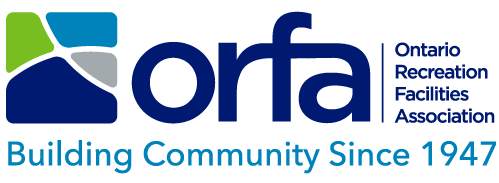ALERT - Risks of Hot Water Over 49°C (120°F)
The Ontario Recreation Facilities Association Inc. (ORFA) wishes to advise members of the risks associated with the use of hot water over 49°C (120°F).
As part of our training courses, the ORFA has actively promoted the benefits of using water that is heated to a temperature of 60°-71°C (140°-160°F) to obtain the best ice making results. Please refer to Taking Control of Your Flood Just Makes $ense.
The ORFA continues to recognize the benefits of using a water temperature of 60°-71°C (140°-160°F), but further wishes to remind members of the risks associated with water temperatures above 49°C (120°F).
WARNING:
Water at 71°C (160°F) will physically damage the human body by scalding resulting in burns. Humans cannot withstand temperatures of 60°C (140°F). Your body will not let you hold your hand in water that is 60°C (140°F) and skin damage (burn) will occur. Length of exposure will dictate skin damage that will be categorized as a First, Second or Third degree burn.
First-Degree Burns
First-degree burns, the mildest of the three, are limited to the top layer of skin:
- Signs and symptoms: These burns produce redness, pain, and minor swelling. The skin is dry without blisters.
- Healing time: Healing time is about 3 to 6 days; the superficial skin layer over the burn may peel off in 1 or 2 days
Second-Degree Burns
Second-degree burns are more serious and involve the skin layers beneath the top layer:
- Signs and symptoms: These burns produce blisters, severe pain, and redness. The blisters sometimes break open and the area is wet looking with a bright pink to cherry red color.
- Healing time: Healing time varies depending on the severity of the burn. It can take up to 3 weeks or more.
Third-Degree Burns
Third-degree burns are the most serious type of burn and involve all the layers of the skin and underlying tissue:
- Signs and symptoms: The surface appears dry and can look waxy white, leathery, brown, or charred. There may be little or no pain or the area may feel numb at first because of nerve damage.
- Healing time: Healing time depends on the severity of the burn. Deep second- and third-degree burns (called full-thickness burns) will likely need to be treated with skin grafts, in which healthy skin is taken from another part of the body and surgically placed over the burn wound to help the area heal
ORFA members must be aware of Section 7.6.5.1. of the Ontario Building Code which states that "the maximum temperature of hot water supplied by fittings to fixtures in a residential occupancy shall not exceed 49°C”. However, the Occupational Health and Safety Act for Industrial Establishments R.R.O. 1990, Reg. 851 As amended by O. Reg. 516/92; 630/94; 230/95; 450/97; 144/99; 284/99; 528/00; 488/01; 280/05; 629/05; 565/06; 179/07; 494/09 Section 84 states:
84. A worker exposed to the hazard of injury from contact of the worker's skin with,
(a) a noxious gas, liquid, fume or dust;
(b) a sharp or jagged object which may puncture, cut or abrade the worker's skin;
(c) a hot object, hot liquid or molten metal; or
(d) radiant heat,
Shall be protected by,
(e) wearing apparel sufficient to protect the worker from injury; or
(f) a shield, screen or similar barrier, appropriate in the circumstances.
Recommendation
The ORFA recommends that all facility hot water systems be immediately tested and adjusted to meet the maximum building Code temperature requirement of 49°C (120°F) or; if water is above 49°C (120°F) that a procedure be developed which includes awareness training, Personal Protective Equipment, signage to ensure that workers are properly informed and protected as outlined in Section 84 sub-section (e) and (f) of the Industrial Regulations of the OHSA.
Should the facility continue to use water above 49°C (120°F) please consider:
- Posting signage in an area where water is heated above 49°C (120°F).
- Including hot water awareness training in the workers orientation and ongoing training.
- Insulating all water pipes that hold and deliver water above 49°C (120°F).
- The requirement to provide worker PPE when using water above 49°C (120°F).
- Reviewing the water delivery system to ensure that it is secured in a manner that will not allow the hose to “pop out” of the equipment and spray uncontrolled.
MORE ORFA Alerts
